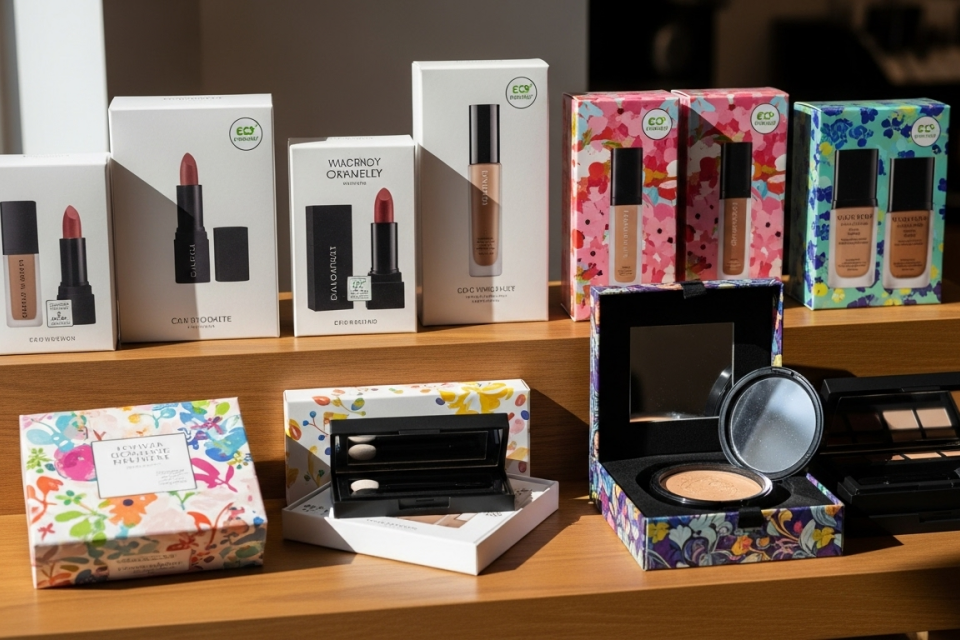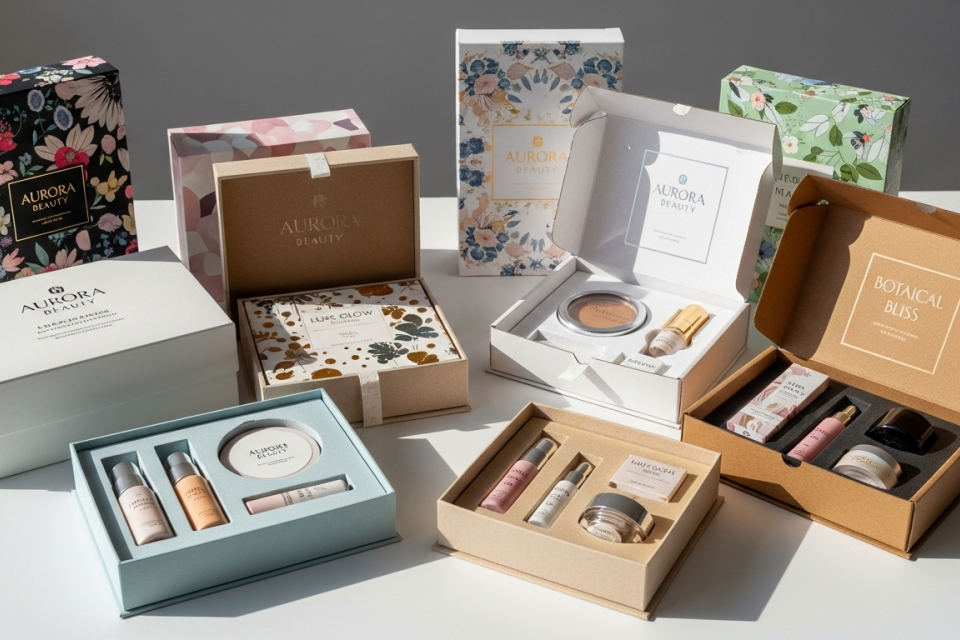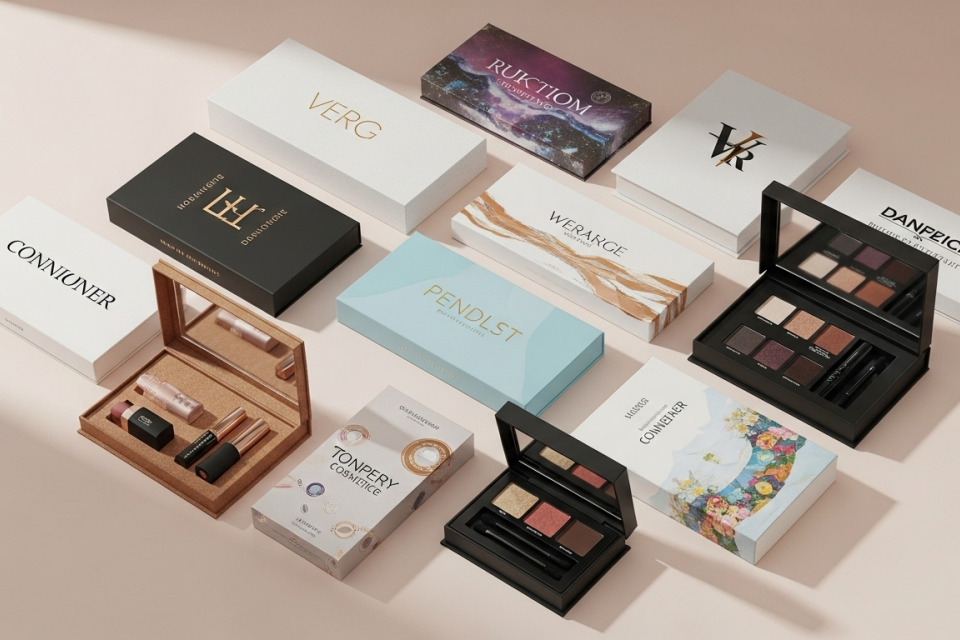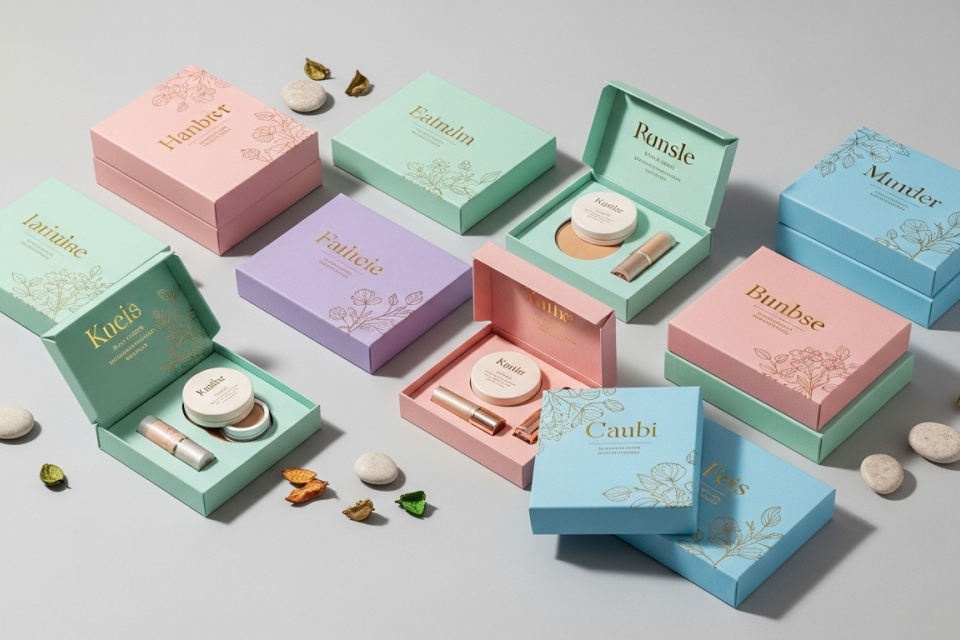Sustainable Beauty Packaging Solutions
Explore the rise of sustainable beauty packaging. Learn about refillable, biodegradable, and innovative materials that reduce environmental impact and meet consumer demand.
Summary
Sustainable beauty packaging solutions refer to eco-friendly materials and innovative designs aimed at reducing the environmental impact of cosmetic and personal care products. With increasing awareness of environmental issues and consumer demand for sustainability, beauty brands are adopting various strategies to mitigate the use of single-use plastics and minimize waste. This trend is notable within the cosmetics industry, where traditional packaging has contributed significantly to pollution and landfill overflow. The shift toward sustainable packaging not only aligns with consumer values but also addresses regulatory pressures for greater environmental responsibility.
Key sustainable packaging methods include refillable systems, which allow consumers to reuse containers, and biodegradable materials that decompose naturally, such as those made from cornstarch or seaweed. Minimalist designs that use fewer materials and innovative options like dissolvable packaging also play a role in reducing waste. These alternatives appeal to eco-conscious consumers and have the potential to reshape the industry’s approach to packaging while enhancing brand loyalty and market competitiveness. Prominent brands like Lush and Aveda exemplify this shift by implementing closed-loop systems and utilizing plant-based materials, respectively.
Despite the benefits, the transition to sustainable packaging poses challenges, including sourcing sustainable materials, compliance with evolving regulations, and consumer education about these options. Additionally, the higher costs associated with sustainable practices can deter smaller brands from adopting these solutions. Companies must navigate these complexities to maintain transparency and avoid accusations of greenwashing, where claims of sustainability do not match actual practices.
Overall, the movement toward sustainable beauty packaging is gaining traction as both consumers and companies recognize the importance of environmental stewardship. This trend is expected to continue evolving, driven by consumer preferences, regulatory changes, and advancements in material technology, all aimed at fostering a more sustainable future in the beauty industry.
Table of Contents
Types of Sustainable Beauty Packaging
Sustainable beauty packaging encompasses a variety of innovative materials and designs aimed at reducing environmental impact while maintaining functionality and aesthetics.
Refillable Packaging
Refillable packaging is increasingly popular among beauty brands as a means to combat single-use plastics. This approach allows consumers to purchase a durable container that can be refilled multiple times, thereby significantly reducing packaging waste. Refill systems often utilize simple cartridges or pods made from lightweight materials, appealing to eco-conscious consumers seeking long-term, cost-effective solutions.
Compostable and Biodegradable Materials
Compostable and biodegradable packaging options are made from organic materials that break down naturally over time. For example, materials such as cornstarch, bamboo by-products, and bioplastics derived from renewable resources like plant starches serve as effective alternatives to traditional plastics. These biodegradable options decompose without leaving harmful residues, thus mitigating the environmental issues associated with conventional packaging. Additionally, packaging made from materials like seaweed and cardboard offers rapid decomposition while being recyclable and renewable, further supporting sustainable practices in the industry.
Minimalist Designs
Minimalist packaging designs utilize fewer materials, which not only reduces waste but also enhances the elegance of the product’s presentation. By adopting a more streamlined approach, brands can achieve an aesthetic appeal while contributing to sustainability efforts through decreased material usage.
Dissolvable Packaging
Though less common than recyclable or refillable options, dissolvable packaging is gaining traction due to its zero-waste potential. Water-soluble packaging materials break down easily in the environment, thus reducing post-consumer waste and providing a sustainable alternative to conventional packaging solutions.
Returned Packaging Systems
Some brands have implemented returnable packaging systems, allowing consumers to mail back used containers for cleaning, sterilization, and repurposing. For example, Lush operates a closed-loop recycling program, encouraging customers to return used pots in exchange for incentives such as discounts on future purchases. While this method is scalable, it does involve logistical challenges and costs associated with the cleaning process.
Innovative Materials
The use of innovative materials, such as biopolymers and bioplastics, is on the rise within the beauty packaging sector. These materials are derived from natural sources and offer an eco-friendly alternative to traditional plastics. Some biopolymers are even designed to be biodegradable, further enhancing their sustainability profile. By embracing these diverse types of sustainable packaging, beauty brands can significantly reduce their environmental impact while catering to the growing consumer demand for eco-friendly products.

Benefits of Sustainable Beauty Packaging
Sustainable beauty packaging offers numerous advantages for both consumers and brands, aligning environmental responsibility with market trends and consumer preferences.
Environmental Impact and Waste Reduction
One of the most significant benefits of sustainable packaging is its potential to reduce environmental harm. By utilizing eco-friendly materials such as biodegradable or recyclable options, beauty brands can substantially decrease the amount of waste that ends up in landfills. Furthermore, these sustainable practices help conserve natural resources, including energy and water, which are essential in the packaging process. Sustainable packaging initiatives can also mitigate the impact of pollution caused by traditional packaging materials, thereby contributing to healthier ecosystems and reducing threats to wildlife.
Cost Efficiency in Packaging Production
Adopting sustainable packaging can lead to significant cost savings for beauty brands. By minimizing reliance on virgin materials and opting for recycled or renewable resources, companies can streamline production processes and reduce raw material procurement costs. The principles of a circular economy allow businesses to recycle materials efficiently, which not only cuts waste disposal expenses but also lowers their overall operational costs. This enhanced efficiency translates into better resource allocation and improved bottom lines for companies committed to sustainability.
Enhanced Customer Loyalty and Engagement
Consumer preferences are shifting increasingly towards brands that prioritize sustainable practices. A notable percentage of consumers actively seek beauty products with recyclable or eco-friendly packaging, indicating a heightened awareness of sustainability issues. By aligning with these values, brands can foster greater customer loyalty and engagement, ultimately enhancing their market position. Sustainable packaging resonates with eco-conscious consumers, contributing to a positive brand image that can differentiate companies in a competitive market.
Regulatory Advantages for Sustainable Businesses
As governments around the world implement stricter regulations encouraging sustainable practices, companies adopting eco-friendly packaging can benefit from compliance and avoid potential fines. These regulatory advantages position businesses favorably for sustainable finance opportunities, attracting investors and partners who prioritize responsible practices. By aligning with ecological initiatives, brands not only enhance their reputation but also reinforce their commitment to sustainability, which is becoming increasingly important in today’s market.

Challenges in Implementing Sustainable Packaging
The transition to sustainable packaging in the beauty industry presents several significant challenges that companies must navigate to successfully implement eco-friendly practices. These challenges range from material sourcing difficulties to regulatory compliance and consumer expectations.
Material Sourcing Difficulties
Sourcing biodegradable materials, such as polylactic acid (PLA), often poses substantial challenges due to supply chain limitations and availability issues. Additionally, the cost associated with sourcing sustainable materials can be prohibitive, particularly for smaller brands with limited resources. Many companies experience difficulties in finding suppliers who can meet their sustainability criteria without compromising on quality or increasing production costs.
Regulatory Compliance
Navigating the complex landscape of packaging regulations and compliance standards can be daunting for beauty brands. In regions like the European Union, strict regulations frequently mandate the reformulation of products to meet compliance standards, which can strain smaller companies lacking the necessary resources. Furthermore, regulatory inconsistencies across different markets can complicate efforts to implement uniform sustainable practices globally.
Consumer Expectations and Education
Consumer attitudes toward sustainability have shifted significantly, with a growing demand for eco-friendly products. However, this shift also raises expectations for transparency and accountability from brands. Companies must effectively communicate their sustainability efforts to avoid accusations of greenwashing, where misleading claims can damage brand credibility and consumer trust. Educating consumers about sustainable packaging and its benefits is crucial, yet often challenging, as many customers may not fully understand the implications of their purchasing decisions.
Economic Factors and Supply Chain Issues
High costs associated with sustainable packaging solutions can deter brands from adopting these practices. Advanced packaging options often require significant investment, which may be reflected in product pricing, potentially alienating price-sensitive consumers. Additionally, logistical hurdles in procuring sustainable materials on a global scale pose a risk of supply chain disruptions, particularly for fast-growing startups.
Integration of Technology
Implementing technological solutions for tracking and managing sustainable materials can enhance efficiency but also presents challenges. Many companies struggle to adopt the necessary technologies effectively within their operations, which can hinder progress toward sustainable practices. Moreover, the need for continuous innovation and research and development to create new biodegradable or refillable packaging solutions requires considerable resources and investment, creating additional barriers for brands.

Case Studies
Innovations in Sustainable Packaging
Several beauty brands are at the forefront of implementing innovative sustainable packaging solutions. For example, Case Paper is exploring biodegradable and compostable films, with plans to offer at least one of these options in commercial volumes by 2025. Their commitment to minimizing environmental impact while maintaining the necessary performance of packaging has driven the creation of their fully recyclable laminate, LuMet™ transfer metallized film.
Minimalist and Smart Packaging
Brands like Lush have pioneered the use of minimalist packaging designs that reduce excess materials. Their “Naked” products are notable for being sold without traditional packaging, utilizing compostable labels printed with vegetable-based inks, thereby aligning with a circular economy model. Furthermore, the integration of smart packaging solutions, such as QR codes that provide product information digitally, is gaining traction. This approach not only cuts down on printed inserts but also enhances consumer engagement by making product information easily accessible.
Refillable and Reusable Solutions
The trend toward refillable packaging is also becoming more prevalent among beauty brands. Implementing refill designs can significantly reduce greenhouse gas emissions, with estimates suggesting reductions of around 80–85% in emissions associated with packaging and transport. Companies are developing various strategies to encourage consumer participation in refill schemes, which not only promotes sustainability but also builds brand loyalty.
Ethical Sourcing and Sustainable Materials
Leading beauty brands prioritize responsibly sourced materials to avoid contributing to deforestation and exploitative labor practices. For instance, Aveda employs plant-based inks derived from renewable sources, such as soy and vegetables, which are less harmful to the environment compared to petroleum-based alternatives. This commitment to sustainability extends to the entire packaging process, ensuring that every aspect is aligned with eco-friendly values.
Case Studies of Successful Implementation
The adoption of sustainable packaging solutions is not without challenges. However, many brands are successfully navigating these obstacles. The movement towards eco-friendly packaging has garnered attention as consumers become increasingly aware of the environmental impact of single-use containers. As a response, many skincare companies are innovating with new materials and packaging designs that prioritize sustainability while ensuring product integrity. By examining these case studies, it becomes evident that the shift towards sustainable beauty packaging is reshaping the industry, reflecting both regulatory pressures and consumer demands for responsible products.

Future Trends
As the cosmetic industry evolves, several key trends in sustainable beauty packaging are anticipated to shape its future. These trends reflect increasing consumer awareness and demand for environmentally responsible practices, as well as ongoing regulatory developments aimed at promoting sustainability.
Key Themes in Sustainable Beauty Packaging
The overarching themes of transparency, sustainability, and innovation are expected to guide the cosmetic packaging sector in the coming years. In particular, 2025 will likely witness a surge in the popularity of hybrid beauty products, which combine skincare and cosmetic benefits in a single formulation. This trend responds to consumer desires for convenience and multi-functionality, though it presents challenges in substantiating complex claims related to both skincare efficacy and cosmetic performance.
Regulatory Developments
Anticipated changes in legislation will play a crucial role in shaping sustainable packaging practices. Regulatory bodies are expected to introduce standardized definitions for terms like “clean” and “green,” reducing ambiguity and fostering greater accountability among brands. Additionally, initiatives such as Extended Producer Responsibility (EPR) will require manufacturers to take responsibility for their packaging throughout its lifecycle, prompting brands to invest in sustainable alternatives that comply with new requirements.
Material Innovations
Innovative materials, particularly bioplastics and biopolymers, are set to gain traction as alternatives to traditional plastics in cosmetic packaging. These materials, derived from renewable sources like corn and sugarcane, can potentially reduce the carbon footprint associated with packaging production while offering biodegradability and compostability benefits. The increasing use of recyclable, biodegradable, and refillable packaging is expected to minimize waste and conserve natural resources, aligning with growing consumer expectations for eco-friendly products.
Recycling and Consumer Expectations
Recycling will continue to play a pivotal role in the evolution of sustainable packaging solutions. Consumers are increasingly inclined to favor brands that demonstrate a commitment to responsible packaging practices, and as awareness of the environmental impact of single-use plastics grows, the demand for sustainable options is anticipated to increase. The focus will shift further away from single-use packaging toward reusable and refillable systems, necessitating innovation in design and material selection.
